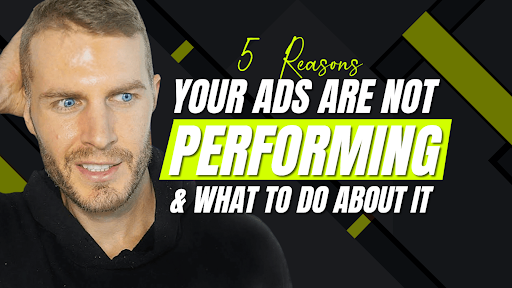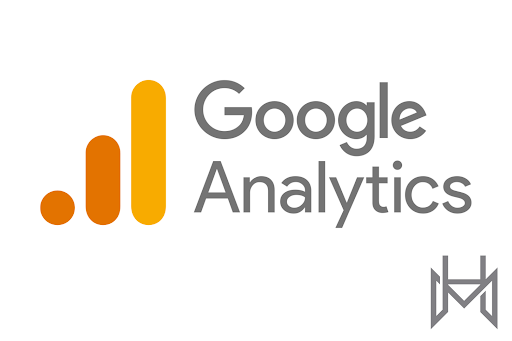
5 Reasons Your Ads Are Not Performing & What To Do About It
Hello, again, goblins and Hyrosians. If you’re running ads but aren’t seeing the results you’re hoping for, you’re wasting your money. It’s that simple.
And it can be frustrating to invest your time, money, and effort into creating an ad campaign only to have it fall flat.
So what do you do when you have ads not converting?
Most of the time, you kill the ad, but that is just wrong. Look, your ad may or may not be the problem. It could be your targeting or call to action that is the problem.
One clear thing is that advertising is a crucial aspect of any business.
And getting it right can be the difference between success and failure.
But with so much competition, it can take time to stand out and communicate your message effectively.
If your ads are not performing, it’s time to take a step back and evaluate what might be going wrong.
There could be various reasons why your ads aren’t doing well. For example, you may need to connect with your audience, have poor ad designs, or simply have wrong targeting.
Let’s explore the five most common reasons your ads are not converting and underperforming and provide actionable tips on improving your advertising strategy.
Some of the most common reasons your ads might not be performing well may be:
- Your targeting is off. If your ads are shown to the right people, they will perform well. But, again, if you’re not targeting the right people with your ads, they won’t be seen by the people who are most likely to be interested in what you’re selling.
Make sure you’re targeting your ads to people who are interested in what you offer by better targeting. To do targeting better, you’ll need to have more complete information about your audience, their interests, and their needs. - Your ads are not relevant. People are more likely to click on and engage with ads that are relevant to their interests. So make sure your ads are tailored to the people you’re targeting.
Look, if you make boring ads that don’t relate to what your audience is looking for, wants, or needs, they’re going to be ignored. You can spend a ton making ads, but if they’re irrelevant to your audience, they’re pointless. - Your ads could be more visually appealing. People are drawn to visually appealing ads. So make sure your ads are well-designed and use eye-catching visuals.
Your ad creative will stop people in their tracks and make them want to click on your ad. But, unfortunately, if your ad creative could be more exciting and relevant, people will just scroll past it.
Make sure your ad creative is eye-catching and relevant to your target audience. - Your ads are not engaging. People are more likely to click on and engage with ads that are interesting and relevant to their lives. So make sure your ads are creative and engaging.
- Your ads are not optimized for conversions. If your ads are not optimized for conversions, they won’t perform well. Make sure your ads are clear about what you want people to do and make it easy for them to take action.
Your ad copy will convince people to click on your ad and learn more about what you’re selling.
If you’re not happy with the performance of your ads, try making some changes to see if you can improve your results.
Here are a few tips:
- Test different targeting options. Try targeting different demographics, interests, and behaviors to see what works best for your business.
- Test different creative options. Try using different images, videos, and text to see what gets the best results.
- Test different bidding strategies. Try bidding for clicks, impressions, or conversions to see what gets you the best results.
- Track your results. Ensure you’re tracking your results to see what’s working and what’s not. This will help you make better decisions about your advertising campaigns.
The key takeaway is that all this data won’t matter if you’re only getting incomplete insights. And the only way I know of to get the best data, at the most granular detail, is through Hyros.
But if you’re happy trying to run ads and make decisions based on incomplete data, then the rest of this post doesn’t make much sense to you. But if you want to get a better picture of the problems from your ads not converting, read on.
Problem 1: You’re Not Reaching the Right Audience
If you’re struggling to get your ads in front of the right people, it’s time to take a closer look at who you’re targeting.
Are you using demographic criteria like age and gender to narrow your audience? Are you targeting a particular geographic area or type of customer?
If your target audience isn’t clearly defined, it could be why your ad campaigns aren’t performing.
Take the time to really define who you want to reach and adjust your targeting accordingly. You can also use data from previous campaigns to help inform who the ideal customer is for each product or service you offer.
Don’t just throw spaghetti at the wall and hope something sticks – be strategic about targeting, then sit back and watch how quickly those conversions start rolling in!
Identifying Your Target Market

If you’re trying to get your ads out there and noticed, you need to start by figuring out your target audience.
Do you know who you want to reach? Are they men or women? Young or old? Do they live in a specific area, or are they spread worldwide?
Knowing this info will help you create ads that speak directly to your potential customers and ensure the right people see them.
Once you have a good handle on your target market, you can craft ad campaigns specifically for them. That way, when someone sees an ad for your product or service, it will be exactly what they’re looking for – no more wasted time and money on ineffective ads!
Understanding Your Audience Segments
If you want to ensure your ads convert, you need to get to know your audience segments.
Who are they? What do they like? Where do they hang out? What makes them tick?
By taking the time to understand who your potential customers are, you can create ad campaigns that are tailored specifically for them.
You can use their interests and demographics to guide you when creating content and visuals that resonate with them.
Plus, by breaking up your audience into segments (ex., age ranges, location, gender), you can create more targeted ads that have a higher chance of reaching the right people.
By understanding your audience segments better, you’ll more effectively craft your ads to fit your target audience’s desires, and you’ll see a better ROI and conversions almost immediately.
Don’t Rely On Just Audience Insights from Google Analytics and Facebook Ads Manager

Ok, this point is a yes and a no. You need to leverage audience insights, but Google and Facebook will only show you the information that benefits their platforms. Google Analytics and Facebook Ads Manager can be a tool to maximize your ad performance, but you will need to go much deeper into your tracking details.
Both platforms offer tons of valuable data about your target market, including their interests, demographics, and more but don’t go as deep as Hyros.
The information that Google and Facebook will provide you will be your audience’s most recent actions. Still, Hyros will allow you to track multiple campaigns over a long period.
For example, if you ran an ad a year ago and just got one conversion through Google or Facebook, you’ll see that the conversion came from the most recent ad or touch-point.
The truth may be that the customer was tracking your product for months and was just waiting for the right time that made sense to their needs to act.
These insights are much deeper than what Google and Facebook would provide you, and with this information at your fingertips, you will be better able to create tailored ads that will reach the right people and increase conversions.
Problem 2: You Don’t Have a Proper Call to Action (CTA)
If you’re not seeing the results you want from your ads, it might be time to re-evaluate your call to action (CTA).
A CTA encourages people to act on your ad, whether signing up for a newsletter or making a purchase. With an effective CTA, you can convert viewers into customers.
So if your current CTA isn’t doing the trick, try jazzing it up with something more exciting – like “click here for exclusive offers” or “shop now and save big.”
It doesn’t take much to make a difference – just ensure your CTA is clear, concise, and stands out from the rest of the ad.
Get creative, and don’t be afraid to experiment.
Our best CTA is our landing page with the Raven you can see right here – you might be surprised at how much of an impact just one small tweak can make!
Crafting an Effective CTA Button or Link in Your Ad Copy
CTAs are essential when it comes to getting people to take action with your ad. But don’t just settle for any ol’ button or link!
Take some time to craft a compelling CTA that’ll really grab people’s attention and entice them to click. Start by coming up with a catchy phrase that sums up the action you’re asking people to take – like “Shop Now” or “Sign Up Here.”
Then make sure your call-to-action stands out from the rest of your ad copy by using bold, contrasting colors and making it big enough to avoid getting lost in the mix.
Finally, you must have a time limit. People like exclusivity, and they (whether willing to admit it or not, need deadlines for acting). So, make room in your CTA, and create a sense of urgency with words like “last chance” or “limited time only.”
Problem 3: You’re Not Leveraging Social Proof, Testimonials, And Reviews Properly
You might be throwing money down the drain if you need to properly leverage social proof, testimonials, and reviews in your ad.
People are more likely to trust something if it’s been endorsed by others – so make sure you take advantage of that! Include customer reviews or feedback about your product or service in your ad copy.
You can also feature user-generated content like images and videos from satisfied customers to really drive home the point.
Finally, remember to include a link to your review page so people can quickly check out what others have said.
Look, your audience is going to be crucial. So leverage reviews and put them where your potential audience may be hanging out.
Using Social Media Reviews and Testimonials in Ads
This is a really important part of optimizing your ad performance. People like reading about what other people are doing and their experiences with a product.
So, you’re missing out if you’re not leveraging social media reviews and testimonials in your ads.
What’s really important is getting people to trust your product or service. This is key before they part with their hard-earned cash and why it pays to include customer reviews or feedback about what you’re offering in your ad copy.
Plus, don’t forget user-generated content like photos and videos from happy customers. These will really help seal the deal.
Finally, make sure you link to a review page so folks can see what other peeps have said about your stuff.
Problem 4: Your Creative is Lacking Quality

Look, if you put out garbage ads, sorry to say it like that, but many people do put out garbage ads, you’re not going to get any traction. In other words, if you have ads not converting, rather than doubling down on your ad spend, maybe consider that your ads simply aren’t good.
Writer Stephen King talks about “Kill Your Darlings” when it comes to the creative process, and advertisers should learn from the master himself.
Soooooo, if you’re trying to hit it out of the park with your ads, but they just aren’t getting any love, it might be because of the creative.
What does that mean? If you don’t understand, you need to think about it a bit more.
What it means is your visuals, text, and overall look and feel of the ad.
If yours looks a lil’ lack-luster, it won’t spark interest or get people clicking, and you need to fix this pronto.
Problem 5: You’re Not Tracking Correctly
Tracking your ads correctly is essential to the success of any advertising campaign.
With proper tracking, you can determine which ads are performing well and which are not.
This will lead to wasted advertising spend and lower ROI, so don’t waste your time and money, ok?
With the right tracking tools, you can identify key metrics, credit your converting ads for performing, and identify which ads aren’t doing well. These insights matter, because they allow you to scale and adjust your ad campaigns accordingly.
Make sure to use tracking tools compatible with the platforms you are advertising on, and regularly monitor your results to ensure that your ads are driving the desired outcomes.
If your ads are not converting the way you’d like, you need some help. Ready for some help? Book a free call with us at Hyros today.
